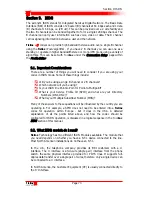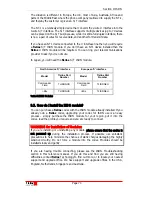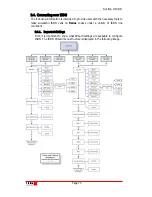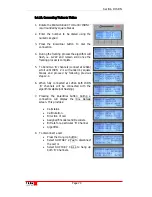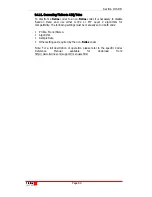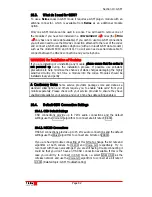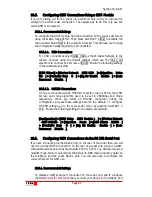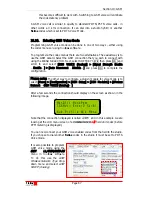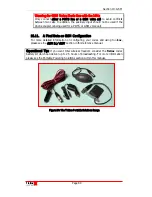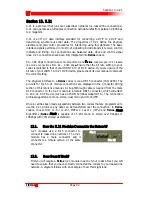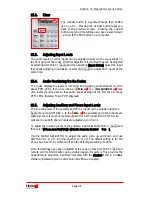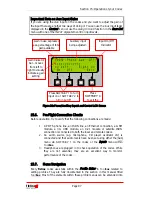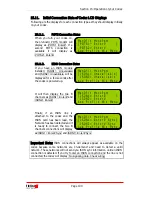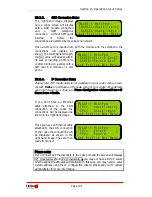
Section 10: GSM
T
ieline
Page
87
T E C H N O L O G Y
this becomes difficult to work with. Switching to GSM voice will eliminate
the codec latency problem.
A GSM voice call is similar in quality to standard POTS/PSTN voice calls - in
other words a 3 kHz connection. It can dial into a studio hybrid or another
T
ieline
codec which is set to POTS Voice Mode.
10.10.
Selecting GSM Voice Mode
Programming GSM voice mode can be done in one of two ways – either using
the codec menus or using
Tool
Box
software.
To program via the codec menus there are two alternatives. The easiest way is to
use the GSM wizard. Select the GSM connection that you wish to connect with
using the
MENU SELECTOR
. Next, select
SOFTKEY 3 Wiz
then press
OK
and
scroll to and select [GSM VOICE (Analog)] > [Signal Strength Enable
→
Enable
←
] > [Auto Reconnect
→
Disable
←
] and press
OK
to complete the
configuration.
Please note:
The other way to configure a plug-in module for voice mode is to
select [Menu] > [Configuration] > [GSM Setup] > [GSM Module1] > [Wireless
Network
→
GSM VOICE (Analog)
←
].
After a few seconds the connection should display on the screen as shown in the
following image.
Note that the connection displayed is called
GSMV
and in this example we are
looking at the
LCD
menu screen of a
COMMANDER
G
3
field unit codec (before
PPM metering is displayed).
You can now connect your GSM voice enabled codec from the field to the studio.
If you choose to dial another
T
ieline
codec in the studio it must be set to POTS
Voice mode.
It is also possible to program
GSM voice mode using the
GSM LL/GSM/USB-3G
menu in
Tool
Box
software.
To do this use the
GSM
Wireless Network Type
drop-
down menu and select
GSM
VOICE (Analog).
ManDflt MonoPgm
[GSMV1< Enter# Ss=6]
Aud Profile Wiz Menu

